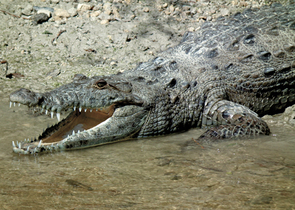Nature Conservation 3/2012 — 17. 10. 2012 — International Nature Conservation — Print article in pdf
Pelc F. & Plesník J.: Nature Conservation Structure in the United States: Any Lessons Learnt for Eur

Since the late 1960s and early 1970s, the United States environmental protection efforts have been paying special attention to reducing environmental pollution affecting human health.
Nevertheless, nature conservation has been maintaining its important position within the U.S. environmental sector. In the United States, there is a “grey” agency as well as two “green” agencies. The U.S. Environmental Protection Agency (EPA) is an agency of the federal government of the United States charged with protecting human health and the environment, by writing and enforcing regulations based on laws passed by Congress. The EPA conducts environmental assessment, research, and education and it also deals with invasive alien species. The Agency has the responsibility of maintaining and enforcing national standards under a variety of environmental laws. In addition to EPA headquarters based in Washington, D.C., each of the 10 EPA regional offices is responsible within its states for implementing the Agency’s programmes, except those that have been specifically delegated to states. A federal governmental authority dedicated to the management of fish, wildlife, and natural habitats, the U.S. Fish and Wildlife Service (FWS) was established within the United States Department of the Interior in 1940. The Service consists of a central administrative office with eight regional offices and nearly 700 field offices distributed throughout the United States. The FWS administers, interalia, the Endangered Species Act and measures to conserve migratory bird and fish species. The other U.S. federal nature conservation authority, the National Park Service (NPS), manages all national parks, many national monuments, and other conservation and historical properties with various title designations. In total, the 22,000 employees of the NPS oversee 397 units, of which 58 are designated national parks. Despite cuts in the U.S. federal budget, all the three agencies have been provided with more or less stable finances from the Government. Communication, education and public awareness including access to updated and credible information on the environment qualities and support to citizen science and public involvement into environment assessment procedures are also of great importance for the federal environmental protection authorities.

